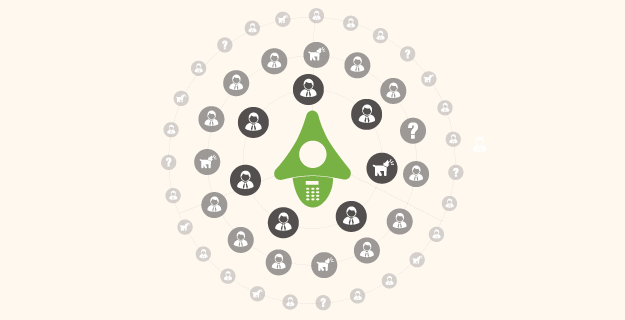
I came across this article on nojitter written by Eric Krapf which discusses the potential birth of a new buzzword – ‘Context’ – arising from Enterprise Connect Orlando 2014 and “thanks to the integration of communications with Big Data”.
This article got me thinking about what context means when it comes to conference calls and online meetings, and why it’s so important. And moreover, why Big Data may contribute to context in the (perhaps near) future, but for now there’s a lot of important contextual information that can, and should, be present on conference calls.
In the old days, conference calls were an extremely opaque experience – and for many people, they still are. By this I mean that familiar experience of hearing ‘badoops’ on conference calls and not knowing what they relate to. Has someone just joined? Or left? Who?
This lack of human context is probably the main reason why conference calls have been disliked for so long. If you don’t know who’s on the call and who’s speaking, whether anyone’s missing, and who exactly has all that background noise, then you’re set up for a chaotic, impersonal and frustrating meeting.
So, no matter what you think about how Big Data could contribute to context in the future, a certain level of context is crucial right now, and many providers don’t even offer this:
Knowing Who’s on the Call
Has everyone joined who should be there? Am I still missing a key stakeholder? Is someone listening in who shouldn’t be here? A visual interface listing all participants is the best way to absorb this information, which is essential for productive conversations and for preserving the security of the conference call.
Knowing Who’s Speaking
Disembodied voices without any identification are far from the human experience of a face-to-face meeting, where you know exactly who’s speaking. Being able to know who’s speaking through a visual interface allows you more effectively to assess the relevance or weight of what’s being said on the basis of knowing who’s saying it.
… And Knowing a Little Bit More About Who’s on the Call
Seeing the names of who’s speaking is one thing, but getting just a little bit more information can be extremely helpful. For example, LoopUp integrates LinkedIn profile information into the live readout of who’s on the call. This informs you at a glance the roles and career histories of call participants which is especially useful when speaking with external parties (and can help greatly in the sometimes awkward chit chat at the beginning of the call!).
The final line of the article speaks of the future: “this idea of context is still a glimmer in the eye of folks like Microsoft, Cisco, Avaya, and others”. While we already include what we feel is a very useful amount of context in our product (and more than other providers do), we, too, envisage big changes in the future. Consider a major sales call, where you and the prospect you’ve never met are the first to join. Imagine how much easier that ice-breaker chit-chat would be if you were armed with contextual options of knowing that the prospect manages an old university friend; is currently in Paris experiencing glorious weather; or is an avid English rugby fan and England triumphantly defeated Wales previous Saturday. It would likely be a very different conversation. We’d all have to learn how to use this information so that it’s not plain weird, but it would be very helpful if used skilfully. However, there will be challenges ahead, too. Context will need to be useful and not intrusive, and non-sensitive or consented versus personal and private.









